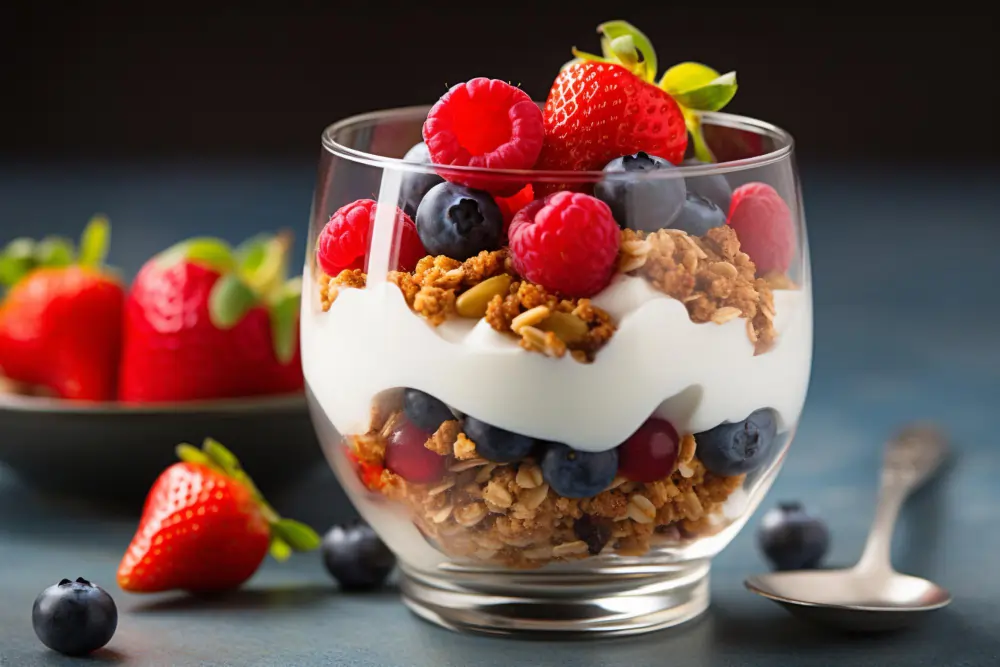Introduction
Understanding the Importance of a Balanced Diet
The Key Components of a Balanced Diet
Read More: Top 10 Unhealthiest Protein Choices to Avoid
Portion Control and Balance Diet
Balancing Nutrients for Optimal Health
Sample Balanced Diet Plan
The Road to a Healthier You
FAQs
Q: What is a balanced diet plan?
A: A balanced diet plan is a way of eating that provides your body with the nutrients it needs to function properly and stay healthy. A balanced diet plan includes a variety of foods from different food groups, such as fruits, vegetables, grains, protein, and dairy, in appropriate portions and frequencies.
Q: Why is a balanced diet plan important?
A: A balanced diet plan is important because it can help you:
- Maintain a healthy weight and prevent obesity
- Prevent or manage chronic diseases, such as diabetes, heart disease, and cancer
- Boost your immune system and fight infections
- Support your growth and development
- Enhance your mood and mental health
Q: How can I create a balanced diet plan?
A: There are many ways to create a balanced diet plan, depending on your age, gender, activity level, and health goals. Some general guidelines are:
- Follow the Healthy Eating Plate model, which divides your plate into four sections: half for fruits and vegetables, a quarter for whole grains, and a quarter for healthy protein sources, such as lean meat, fish, eggs, beans, or nuts. Add a serving of low-fat dairy or a calcium-rich alternative, such as soy milk or almond milk, and a glass of water or unsweetened tea or coffee.
- Use the MyPlate tool, which provides personalized recommendations based on your age, sex, height, weight, and physical activity. You can also track your food intake and physical activity, and get tips and resources to improve your eating habits.
- Consult a registered dietitian or nutritionist, who can assess your nutritional needs and preferences, and design a customized diet plan that suits your lifestyle and goals.
Q: What are some examples of foods that I should include in my balanced diet plan?
A: Some examples of foods that you should include in your balanced diet plan are:
- Fruits, such as apples, bananas, oranges, berries, and melons, which provide vitamins, minerals, antioxidants, and fiber
- Vegetables, such as spinach, broccoli, carrots, tomatoes, and peppers, which provide vitamins, minerals, antioxidants, and fiber
- Grains, such as oats, brown rice, quinoa, and whole wheat bread, which provide carbohydrates, fiber, and B vitamins
- Protein, such as chicken, turkey, fish, eggs, beans, lentils, tofu, and nuts, which provide protein, iron, zinc, and omega-3 fatty acids
- Dairy, such as milk, yogurt, cheese, and cottage cheese, which provide calcium, protein, and vitamin D
Q: What are some examples of foods that I should limit or avoid in my balanced diet plan?
A: Some examples of foods that you should limit or avoid in your balanced diet plan are:
- Processed foods, such as chips, cookies, cakes, candy, and soda, are high in calories, sugar, salt, and fat, and low in nutrients
- Red meat, such as beef, pork, and lamb, are high in saturated fat and cholesterol, and may increase the risk of heart disease and cancer
- Trans fats, such as margarine, shortening, and baked goods, are artificially created and can raise your bad cholesterol and lower your good cholesterol, and increase the risk of heart disease and stroke
- Added sugar, such as table sugar, honey, syrup, and sweetened beverages, which can contribute to weight gain, tooth decay, and diabetes
- Alcohol, can impair your judgment, coordination, and liver function, and increase the risk of addiction, accidents, and diseases







